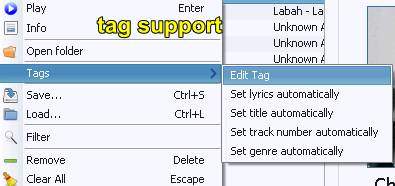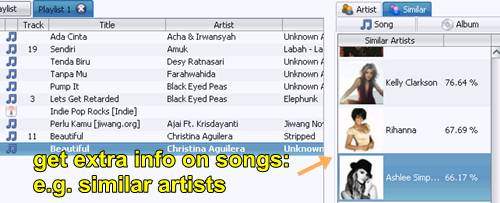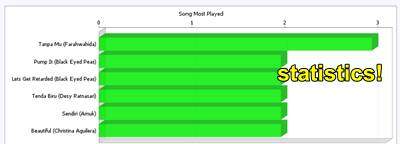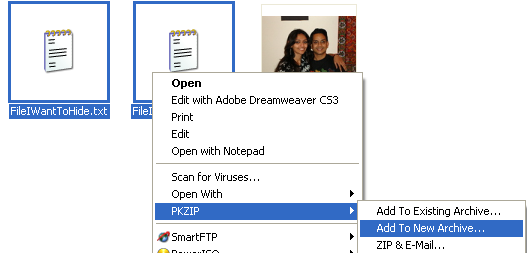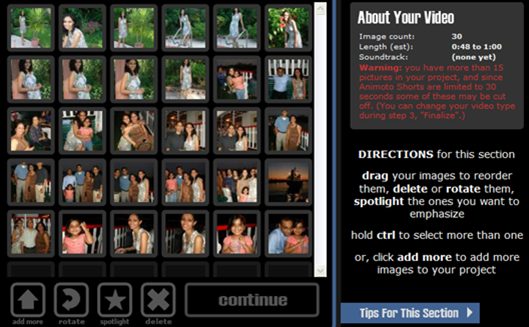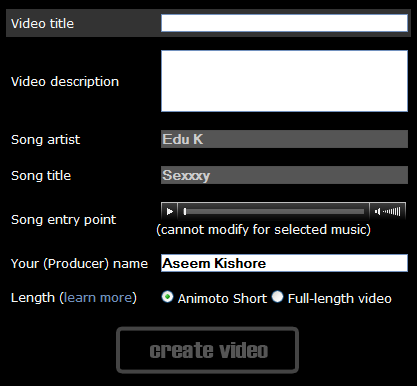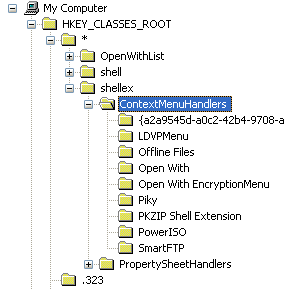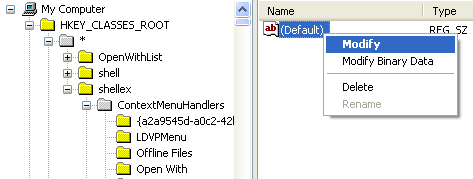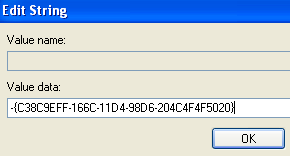-
SQL Client Configuration - cliconfg
-
System Configuration Editor - sysedit
-
System Configuration Utility - msconfig
-
System File Checker Utility (Scan Immediately)- sfc /scannow
-
System File Checker Utility (Scan Once At Next Boot)- sfc /scanonce
-
System File Checker Utility (Scan On Every Boot) - sfc /scanboot
-
System File Checker Utility (Return to Default Setting)- sfc /revert
-
System File Checker Utility (Purge File Cache)- sfc /purgecache
-
System File Checker Utility (Set Cache Size to size x)-sfc/cachesize=x
-
System Information - msinfo32.
-
Task Manager – taskmgr
-
System Properties - sysdm.cpl
-
Task Manager – taskmgr
-
TCP Tester - tcptest
-
Telnet Client - telnet
-
Tweak UI (if installed) - tweakui
-
User Account Management- nusrmgr.cpl
-
Utility Manager - utilman
-
Windows Address Book - wab
-
Windows Address Book Import Utility - wabmig
-
Windows Backup Utility (if installed)- ntbackup
-
Windows Explorer - explorer
-
Windows Firewall- firewall.cpl
-
Windows Magnifier- magnify
-
Windows Management Infrastructure - wmimgmt.msc
-
Windows Media Player - wmplayer
-
Windows Messenger - msmsgs
-
Windows Picture Import Wizard (need camera connected)- wiaacmgr
-
Windows System Security Tool – syskey
-
Windows Update Launches - wupdmgr
-
Windows Version (to show which version of windows)- winver
-
Windows XP Tour Wizard - tourstart
-
Wordpad - write
-
Password Properties - password.cpl
-
Performance Monitor - perfmon.msc
-
Phone and Modem Options - telephon.cpl
-
Phone Dialer - dialer
-
Pinball Game - pinball
-
Power Configuration - powercfg.cpl
-
Printers and Faxes - control printers
-
Printers Folder – printers
-
Private Character Editor - eudcedit
-
Quicktime (If Installed)- QuickTime.cpl
-
Real Player (if installed)- realplay
-
Regional Settings - intl.cpl
-
Registry Editor - regedit
-
Registry Editor - regedit32
-
Remote Access Phonebook - rasphone
-
Remote Desktop - mstsc
-
Removable Storage - ntmsmgr.msc
-
Removable Storage Operator Requests - ntmsoprq.msc
-
Resultant Set of Policy (XP Prof) - rsop.msc
-
Scanners and Cameras - sticpl.cpl
-
Scheduled Tasks - control schedtasks
-
Security Center - wscui.cpl
-
Services - services.msc
-
Shared Folders - fsmgmt.msc
-
Shuts Down Windows - shutdown
-
Sounds and Audio - mmsys.cpl
-
Spider Solitare Card Game - spider
-
Malicious Software Removal Tool - mrt
-
Microsoft Access (if installed) - access.cpl
-
Microsoft Chat - winchat
-
Microsoft Excel (if installed) - excel
-
Microsoft Frontpage (if installed)- frontpg
-
Microsoft Movie Maker - moviemk
-
Microsoft Paint - mspaint
-
Microsoft Powerpoint (if installed)- powerpnt
-
Microsoft Word (if installed)- winword
-
Microsoft Syncronization Tool - mobsync
-
Minesweeper Game - winmine
-
Mouse Properties - control mouse
-
Mouse Properties - main.cpl
-
Nero (if installed)- nero
-
Netmeeting - conf
-
Network Connections - control netconnections
-
Network Connections - ncpa.cpl
-
Network Setup Wizard - netsetup.cpl
-
Notepad - notepad
-
Nview Desktop Manager (If Installed)- nvtuicpl.cpl
-
Object Packager - packager
-
ODBC Data Source Administrator- odbccp32.cpl
-
On Screen Keyboard - osk
-
Opens AC3 Filter (If Installed) - ac3filter.cpl
-
Outlook Express - msimn
-
Paint – pbrush
-
Keyboard Properties - control keyboard
-
IP Configuration (Display Connection Configuration) - ipconfi/all
-
IP Configuration (Display DNS Cache Contents)- ipconfig /displaydns
-
IP Configuration (Delete DNS Cache Contents)- ipconfig /flushdns
-
IP Configuration (Release All Connections)- ipconfig /release
-
IP Configuration (Renew All Connections)- ipconfig /renew
-
IP Configuration(RefreshesDHCP&Re-RegistersDNS)-ipconfig/registerdns
-
IP Configuration (Display DHCP Class ID)- ipconfig/showclassid
-
IP Configuration (Modifies DHCP Class ID)- ipconfig /setclassid
-
Java Control Panel (If Installed)- jpicpl32.cpl
-
Java Control Panel (If Installed)- javaws
-
Local Security Settings - secpol.msc
-
Local Users and Groups - lusrmgr.msc
-
Logs You Out Of Windows - logoff.....
-
Accessibility Controls - access.cpl
-
Accessibility Wizard - accwiz
-
Add Hardware - Wizardhdwwiz.cpl
-
Add/Remove Programs - appwiz.cpl
-
Administrative Tools control - admintools
-
Adobe Acrobat (if installed) - acrobat
-
Adobe Designer (if installed)- acrodist
-
Adobe Distiller (if installed)- acrodist
-
Adobe ImageReady (if installed)- imageready
-
Adobe Photoshop (if installed)- photoshop
-
Automatic Updates - wuaucpl.cpl
-
Bluetooth Transfer Wizard – fsquirt
-
Calculator - calc
-
Certificate Manager - certmgr.msc
-
Character Map - charmap
-
Check Disk Utility - chkdsk
-
Clipboard Viewer - clipbrd
-
Command Prompt - cmd
-
Component Services - dcomcnfg
-
Computer Management - compmgmt.msc
-
Control Panel - control
-
Date and Time Properties - timedate.cpl
-
DDE Shares - ddeshare
-
Device Manager - devmgmt.msc
-
Direct X Control Panel (If Installed)- directx.cpl
-
Direct X Troubleshooter- dxdiag
-
Disk Cleanup Utility- cleanmgr
-
Disk Defragment- dfrg.msc
-
Disk Management- diskmgmt.msc
-
Disk Partition Manager- diskpart
-
Display Properties- control desktop
-
Display Properties- desk.cpl
-
Display Properties (w/Appearance Tab Preselected)- control color
-
Dr. Watson System Troubleshooting Utility- drwtsn32
-
Driver Verifier Utility- verifier
-
Event Viewer- eventvwr.msc
-
Files and Settings Transfer Tool- migwiz
-
File Signature Verification Tool- sigverif
-
Findfast- findfast.cpl
-
Firefox (if installed)- firefox
-
Folders Properties- control folders
-
Fonts- control fonts
-
Fonts Folder- fonts
-
Free Cell Card Game- freecell
-
Game Controllers- joy.cpl
-
Group Policy Editor (XP Prof)- gpedit.msc
-
Hearts Card Game- mshearts
-
Help and Support- helpctr
-
HyperTerminal- hypertrm
-
Iexpress Wizard- iexpress
-
Indexing Service- ciadv.msc
-
Internet Connection Wizard- icwconn1
-
Internet Explorer- iexplore
-
Internet Setup Wizard- inetwiz
-
Internet Properties- inetcpl.cpl








